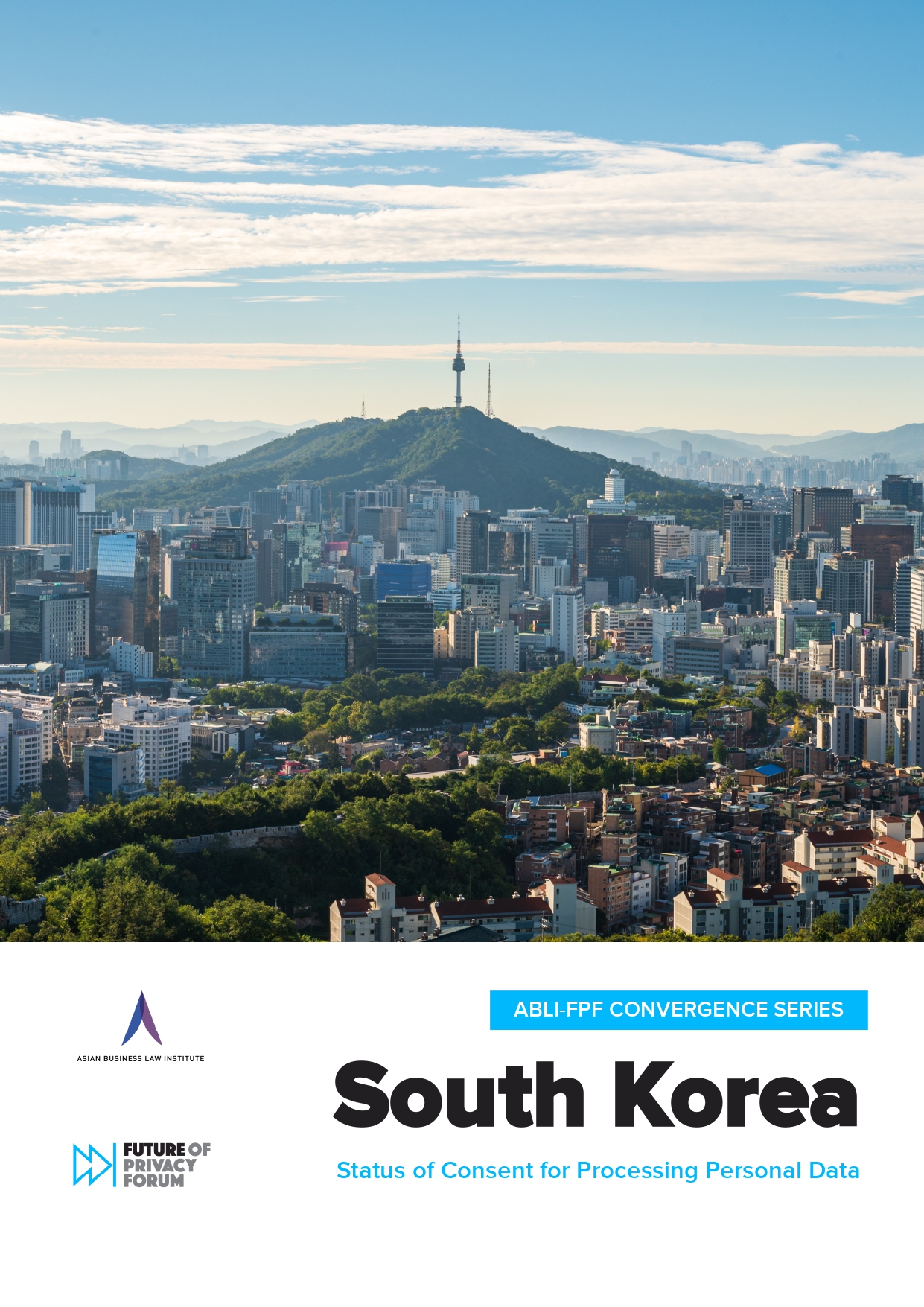
ABLI-FPF Convergences Series - Status of Consent for Processing Personal Data (South Korea report)
On Sale
SGD0.00
ABLI-FPF Convergences Series - Status of Consent for Processing Personal Data (South Korea report)
Author: Dominic Paulger, Policy Manager (APAC), Future of Privacy Forum
Asian Business Law Institute and Future of Privacy Forum
May 2022
This report provides a detailed overview of relevant laws and regulations in South Korea on
Table of Contents
b. Disclosing PI to a third party
c. Collecting and using PI where required to enter into and perform a contract between the individual and the controller
d. Collecting and using PI where unavoidably necessary to comply with obligations under laws/regulations
e. Collecting and using PI where unavoidably necessary for a public institution to perform its duties
f. Collecting and using PI where manifestly necessary to protect the life, physical, or economic interest of the data subject or a third party
b. Insurance Business Act
c. Infectious Disease Control and Prevention Act
b. Publicly available information.
Author: Dominic Paulger, Policy Manager (APAC), Future of Privacy Forum
Asian Business Law Institute and Future of Privacy Forum
May 2022
This report provides a detailed overview of relevant laws and regulations in South Korea on
- notice and consent requirements for processing personal data;
- alternative legal bases for processing personal data which permit processing of personal data without consent if the data controller undertakes a risk impact assessment (e.g., legitimate interests); and
- statutory bases for processing personal data without consent and exceptions or derogations from consent requirements in laws and regulations.
Table of Contents
1. INTRODUCTION
2. ROLE OF THE PERSONAL INFORMATION PROTECTION COMMISSION (“PIPC”)
3. SECTORAL LAWS AND REGULATIONS
3.1. Act on Usage and Protection of Credit Information (“Credit Information Act”)
3.2. Act on the Protection and Use of Location Information (“Location Information Act”)
4. CONSENT AND PRIVACY SELF-MANAGEMENT IN THE PIPA
5. CONDITIONS FOR CONSENT
5.1. Definition and forms of consent
5.2. Withdrawal of consent
5.3. Bundled consent
6. CONSENT FOR SPECIAL CATEGORIES OR USES OF DATA
6.1. Children
6.2. Cookie, Internet of Things, Online Tracking
6.3. Direct marketing
6.4. Biometric data
6.5. Genetic data
6.6. Financial information
6.7. Pseudonymized data
a. Obligations when processing pseudonymized information6.8. Location data
7. CONSENT FOR CROSS-BORDER DATA TRANSFERS
8. TRANSPARENCY AND NOTICE
8.1. Collecting and using PI
8.2. Disclosing PI to third parties
9. SANCTIONS AND ENFORCEMENT
9.1. Collecting PI without consent
9.2. Using and disclosing of PI without consent
9.3. Failure to provide prescribed information
9.4. Enforcement actions
10. COLLECTING, USING, AND DISCLOSING DATA WITHOUT CONSENT SUBJECT TO A RISK IMPACT ASSESSMENT
10.1. Scope of “legitimate interest
10.2. Criteria weighed in the assessment
10.3. Documenting the assessment
10.4. Disclosing the assessment
11. COLLECTING, USING, AND DISCLOSING DATA WITHOUT CONSENT IN OTHER CIRCUMSTANCES DEFINED BY LAW
11.1. Collecting, using, and disclosing PI under the PIPA
a. Collecting and using PIb. Disclosing PI to a third party
c. Collecting and using PI where required to enter into and perform a contract between the individual and the controller
d. Collecting and using PI where unavoidably necessary to comply with obligations under laws/regulations
e. Collecting and using PI where unavoidably necessary for a public institution to perform its duties
f. Collecting and using PI where manifestly necessary to protect the life, physical, or economic interest of the data subject or a third party
11.2. Collecting, using, and disclosing of sensitive PI
11.3. Exceptions to consent requirements in the PIPA
11.4. Exemptions from consent requirements in specific laws
a. Act on Real Name Financial Transactions and Confidentialityb. Insurance Business Act
c. Infectious Disease Control and Prevention Act
11.5. Specific circumstances
a. Pseudonymized information for research purposesb. Publicly available information.

